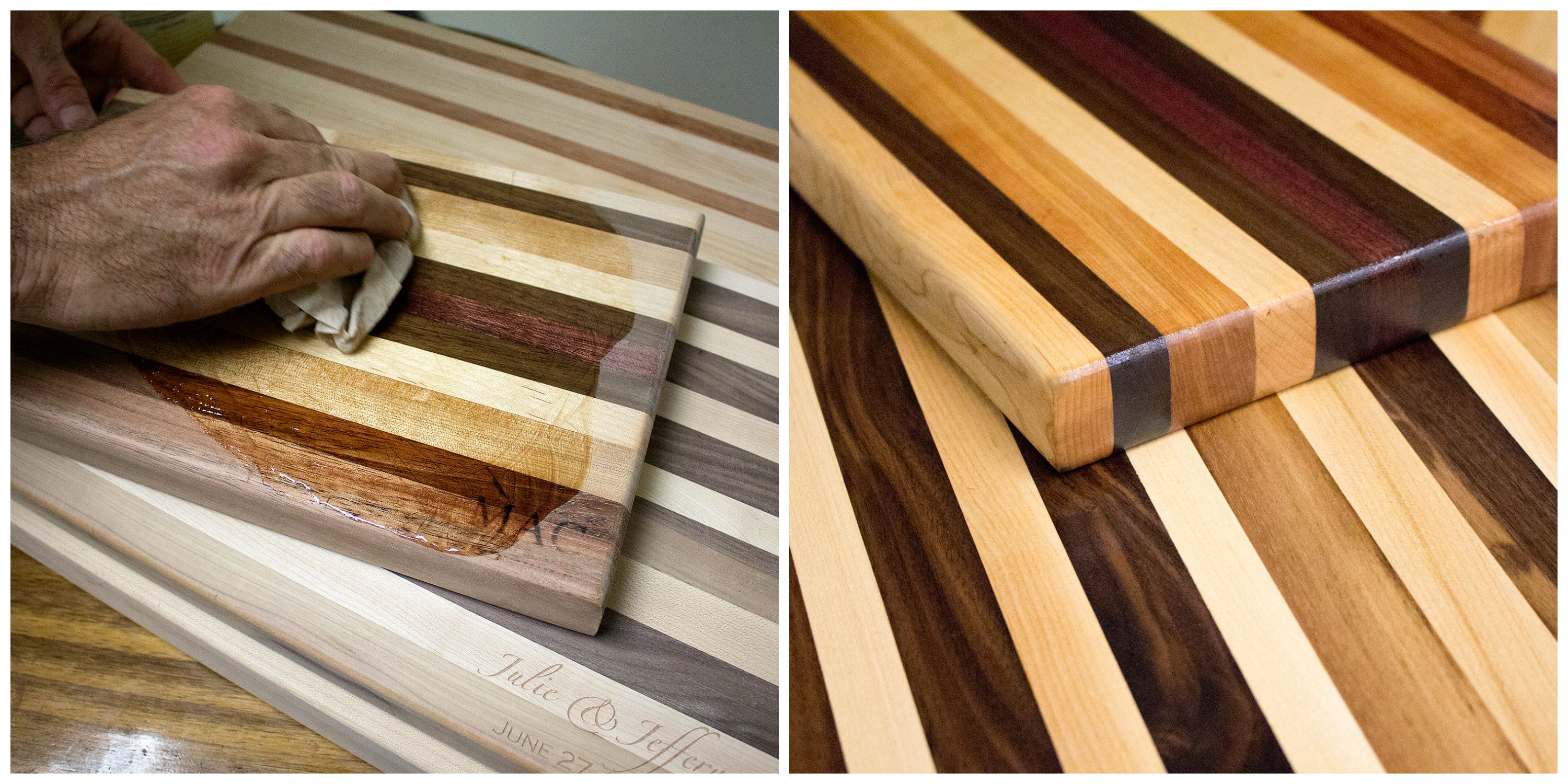
This venture is a decent one for cooks who need a dependable butcher piece cutting load up that won’t twist after some time or move as they utilize it. A special reward is the bended score toward one side that permits you to rub sustenance from the cutting board straightforwardly into your bowl.
Step 1: Decide on the plan, measurements and materials you will use for your cutting board. Amass the required instruments and materials. Since you will utilize a few power devices, make certain to wear wellbeing glasses. Additionally, have a face cover for when you sand the cutting board.
Step 2: Assemble the butcher piece. Cut three 17-inch lengths of 2-inch thick clear maple on the miter saws. Take note of: These are straight cuts, not miter cuts.
Exchange the wood grain by flipping the center board over so its grain runs counter to the external two sheets. Apply wood paste to the edges of the board where they will join. Clip them together while the paste dries.
Step 3: Smooth the butcher piece. Utilize a belt sander to straighten the cutting board surface so there is no detectable edge/move from board to board. To do this, first move the sander over the sheets in a corner to corner movement. Once the move is smooth, sand with the grain along the length of the sheets.
Change to an arbitrary circle sand and to logically better evaluations of sand paper until the surface of the cutting board has no noticeable surface.
Trim one end of the board on a table saw. Put the board in a wooden support that holds the wood enduring as you slide it into the edge. Cut just a thin strip off the end, to smooth the edges of the three sheets you stuck together.
Step 4: Notch the cutting board. Flip the board so the base side confronts upward and draw a half circle at the unfinished end with a compass and pencil.
Introduce a rabbeting bit with metal ball directs on your switch. The bit will cut a break into the base edge of the half circle while leaving a neckline of wood on the top surface. Turn the block base side and course along the edge to frame the break.
Step 5: Add legs to the cleaving square. Bore four legs attachments into the base of the cutting board, utilizing a penetrate press. Try not to penetrate through the board. Put an attachment at every corner on the level end of the board, around 1/2 inch off the long and the short sides.
Coat the inside of the leg attachments with paste. Tap in short wooden dowels for the legs. Guarantee that the dowels are indistinguishable long and tap them into a similar profundity so the board will stand levelly.
Step 6: Finish the surface. Add a mineral oil covering to shield the board from sustenance and fluids. Sand the mineral oil into the board utilizing No. 400 wet and dry sandpaper.
Copyright © Byronbay Directory All Rights Reserved